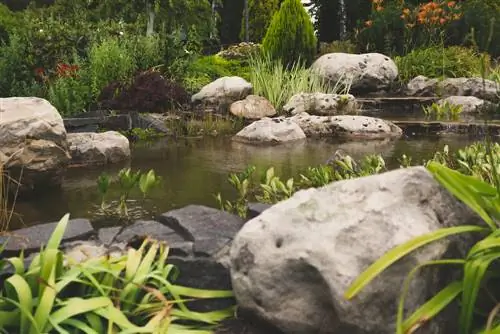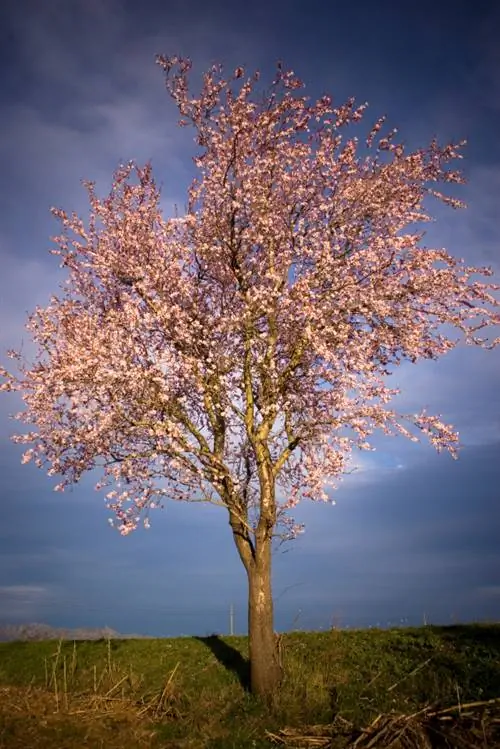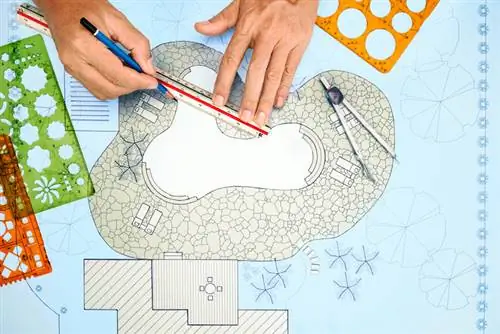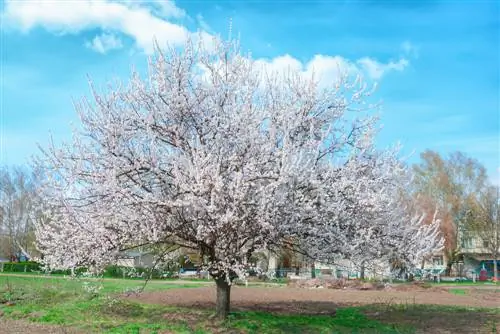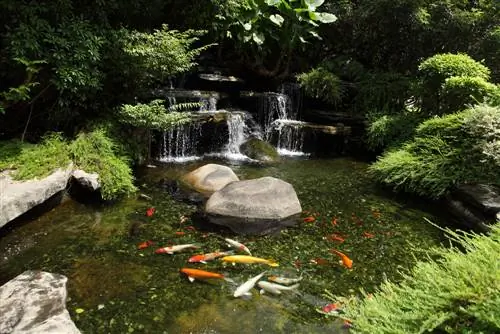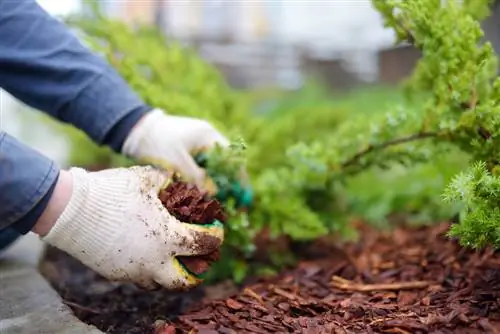- Author admin [email protected].
- Public 2023-12-16 16:46.
- Last modified 2025-01-23 11:21.
The size of the garden pond depends primarily on the dimensions and the other buildings on the property as well as the intended use of the pool. Forward-looking planning is therefore particularly important, as subsequent corrections to the structure can only be made with considerable effort.
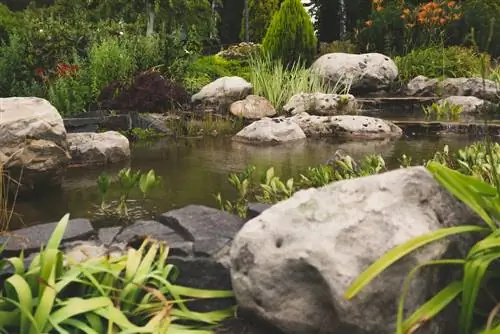
How big should a garden pond be?
The optimal garden pond size depends on personal taste and individual options. In order to provide fish with optimal living conditions, the minimum depth of a pond should be 1 meter. There should be at least 400 liters of water for every square meter of surface.
Making a statement about the optimal size of a garden pond is completely irrelevant, as it depends solely on the personal taste and individual possibilities of its future owner. Mini ponds are no larger than the inside diameter of a VW tire, while the largest naturally created garden ponds have dimensions of several hundred square meters of water surface. Everything in between is possible, as long as you later have the appropriate time frame for pond management and maintenance.
Pond size vs. biological balance
Larger ponds not only appear much more natural, they offer the plants and animal inhabitants much better living conditions than miniature ponds. In order to offer fish an optimal habitat even in winter, the minimum depth of the tank should not be less than one meter. Another rule of thumb when it comes to the size of the garden pond: The ornamental pond should be able to hold at least 400 liters of water per square meter of surface, which is at least 2,400 liters for a 2 x 3 meter pond.
Aquatic plants get bigger, ponds don't
Before breaking ground, making a precise plan of the different depths of the pond zones and their subsequent planting is extremely important, but unfortunately is often neglected in practice. Plan the pond area as generously as possible and taking into account the fact that pond plants usually grow faster in width and height than other garden crops. To do this, the required areas must be taken into account that are necessary for continuous access to the bank zone during clean-up work. You may also want to create a stream later, so that a pond can never be too big.
Tip
Larger ponds react less problematically to temperature fluctuations, as the water temperature in the pool rises less than in smaller ornamental ponds. In addition to a more favorable ecological balance, the growth conditions of the plants and the living environment of the fish used are significantly improved.

